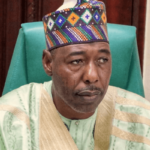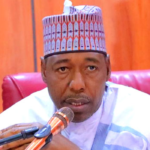Since the inception of this administration, the federal government has made several interventions to address the country’s healthcare delivery system
In November 2024, we recall, an initiative was launched, offering free emergency caesarean sections to poor and vulnerable women.
In a move to combat high maternal mortality rates, the federal government announced that free emergency caesarean sections (C-S) will be provided for pregnant women in need and who meet the eligibility criteria.
The coverage extends to services offered in both public and private facilities accredited by the National Health Insurance Authority (NHIA).
We also recall that in February last year, the Coordinating Minister of Health and Social Welfare, Prof. Ali Pate, said the federal government had recruited 2,497 doctors, midwives, nurses, and community health extension workers, six months previously to bridge the manpower shortage in the health sector.
And on June 28, 2024, President Bola Tinubu signed an Executive Order introducing zero tariffs, excise duties, and Value Added Tax (VAT) on imported pharmaceuticals to revitalise Nigeria’s health sector.
The Executive Order was expected to play a critical role in unlocking Nigeria’s healthcare value chain, and increasing the country’s ability to produce medicines, diagnostics, medical equipment, and other important healthcare items.
Also, in March this year, the federal government approved an 80 per cent subsidy on kidney dialysis, reducing the cost from N50,000 to N12,000 per session in 11 federal hospitals across the country, with an aim to improve accessibility and affordability of treatment.
For us, these efforts and initiatives are obvious proof of the government’s resolve to improve access to healthcare services. In our opinion, it is highly commendable.
But our concern is that the interventions are beginning to appear as cosmetic and temporary measures to literally stem the flow of blood instead of treating the wound.
These interventions: provision of free caesarian emergency operations for pregnant women, reduction in cost of dialysis and waiver of tax on imported drugs, could effectively be taken care of with a viable and functional health insurance in place, which helps to eliminate out-of-pocket health expenditure.
The National Health Insurance Act (NHIA) was signed into law on May 19, 2022, repealing the National Health Insurance Scheme (NHIS) Act of 2004 which addresses some of the challenges of the old law, by providing for mandatory health insurance and establishing the Vulnerable Group Fund.
It also transforms the NHIA into a promoter, integrator and regulator of all health insurance schemes in Nigeria.
Sadly, while 62 per cent of the formal public and private sectors are covered, the large informal sector, which includes the vulnerable and underprivileged, lags with only one per cent coverage.
With an estimated population of over 200 million, many Nigerians, including the 70 per cent rural poor, pay out-of-pocket for their health needs.
The director-general of World Health Organisation (WHO), Tedros Adhanom Ghebreyesus, said for health, “… ultimate responsibility for the performance of a country’s healthcare system lies with the government.”
He noted that many countries are falling short of their performance potential, and must avoid turning a blind eye to system’s failings.
The WHO DG said less-developed countries must spend more on healthcare and create the conditions for a healthy private sector.
But public healthcare services in Nigeria are still very poor and flagrantly underfunded and have not been a major recipient of the concrete inclinations of successive administrations over the years.
We recognise that the budgetary allocations to Nigeria’s health sector are still far below the WHO recommended 11 per cent of a country’s Gross Domestic Product (GDP) and 15 per cent allocation of countries’ annual budget by the African Union (AU).
For years now, the federal government has devoted a higher proportion of its gross national product to the military rather than public expenditures on health.
We know that Nigeria’s maternal and child mortality is undeniably high and among the highest globally with 576 deaths per 100,000 live births, contributing 10 per cent to global deaths for pregnant mothers.
This means that for every 100,000 live births, 576 mothers die during pregnancy or childbirth while under-five mortality rate is 128 per 1,000 live births in the country, which means for every 1,000 live births, 128 children die before reaching the age of five.
At present, the country is contending with high prevalence of non-communicable diseases (NCDs), which include cardiovascular diseases, mental illnesses, diabetes mellitus, chronic respiratory diseases, chronic kidney disease, and cancers. NCDs are a significant health problem in Nigeria and the age-standardised mortality rate across four major NCDs (cardiovascular disease, chronic respiratory disease, cancer and diabetes) was 565 per 100,000 in males and 546 in females in 2021.
While exact numbers fluctuate, Nigeria’s tertiary health institutions have a significant shortage of Magnetic Resonance Imaging (MRI), computed tomography (CT) scan, with a notable lack of functional radiotherapy machines.
Radiotherapy (RT) is an essential component of the curative and palliative treatment of patients with cancer.
Nigeria requires a minimum of 280 RT machines for the increasing number of cancer cases. Painfully, the country has only eight government-funded RT machines.
According to a report, radiology practice in the country is constrained by an erratic power supply, equipment acquisition costs, maintenance downtime and spare parts availability.
The health sector is also battling with mass exodus of its workforce overseas for better welfare and remuneration.
We recall that years back, the federal government with Pate, as then executive director of the National Primary Health Care Development Agency (NPHCDA), introduced the Midwifery Service Scheme (MSS) and Community Health Extension Workers (CHEW) into the Primary Health Care Centres. But that initiative died due to lack of sustainability.
Poor remuneration, rising insecurity, inadequate diagnostic facilities, unconducive work conditions and economic conditions are some of the reasons for the mass exodus of the country’s health workers and doctors.
There’s no gainsaying the fact that health and development are interconnected, with improved health outcomes being both a result of and a driver for development, particularly economic growth and human progress.
A healthy population is more productive and contributes to a stronger economy, while development efforts that address basic needs like food, sanitation, and access to healthcare, are crucial for improving health.
In the opinion of this newspaper, until the nation develops a strong health system and institutions, the federal government’s attempts at enhancing healthcare delivery, will only be a mirage.
We shouldn’t be deodorising health issues but rather find lasting solutions to solving the impasse so we can have a vibrant sector that we can all be proud of.
We’ve got the edge. Get real-time reports, breaking scoops, and exclusive angles delivered straight to your phone. Don’t settle for stale news. Join LEADERSHIP NEWS on WhatsApp for 24/7 updates →








